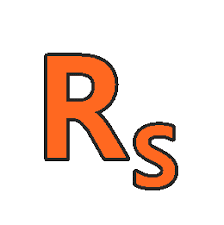About Course
Applied Language technology (also known as natural language processing) is the study of how computers can process and represent natural language, which includes all spoken, written, and signed languages around the world. Language technology is being employed in a wide range of real-world applications, from simple chores like spam filtering to complicated communicative scenarios like teleconferencing.
Applied Language technology has grown more accessible in recent years as a result of this growth. Python, for example, is a popular programming language that allows users to employ the most up-to-date language technology. Programming languages like Python, on the other hand, might be scary to newcomers. As a result, these courses are designed to provide a gradual, hands-on introduction to utilizing Python programming language to apply language technologies.
These Applied Language courses are built with newcomers in mind, with a focus on language and linguistics students, to empower them by making language technology accessible and clear. These learning tools emphasize text as the outcome of linguistic processes, which are intrinsically linked to language use in society, rather than treating it as data and a source of information to be retrieved. If you’re already familiar with language technology, these resources should help you widen your linguistic horizons.
Course Content
Applied Language Technology
-
#1 A brief introduction to JupyterLab
00:00 -
#2 Cloning repositories from GitHub
00:00 -
#3 Exploring Jupyter Notebooks
00:00 -
#4 Getting started with Python: variables and objects
00:00 -
#5 Text formats and encoding
00:00 -
#6 Loading text into Python
00:00 -
#7 Working with multiple files
00:00 -
#8 Regular expressions
00:00 -
#9 Loading a language model into spaCy
00:00 -
#10 Providing text as input to a spaCy language model
00:00 -
#11 Tokenizing text using spaCy
00:00 -
#12 Part-of-speech tagging using spaCy
00:00 -
#13 Morphological analysis using spaCy
00:00 -
#14 Parsing and visualising syntactic dependencies using spaCy
00:00 -
#15 Sentence segmentation using spaCy
00:00 -
#16 Lemmatizing text using spaCy
00:00 -
#17 Customizing spaCy pipelines
00:00 -
#18 Processing texts efficiently using spaCy
00:00 -
#19 Adding custom attributes to spaCy objects
00:00 -
#20 Writing spaCy annotations to disk
00:00 -
#21 Gold standards and reliability
00:00 -
#22 Evaluating performance: accuracy, precision, recall and F1-score
00:00 -
#23 Loading data into pandas Data Frames
00:00 -
#24 Examining pandas DataFrames
00:00 -
#25 Extending pandas DataFrames
00:00 -
#26 Saving and loading pandas DataFrames
00:00 -
#27 How to make the most of the learning materials
00:00 -
#28 Introducing Stanza: how to download language models and load them into the library
00:00 -
#29 Processing text using Stanza
00:00 -
#30 Processing texts efficiently using Stanza
00:00 -
#31 Interfacing the spaCy and Stanza libraries using spacy-stanza
00:00 -
#32 Creating spaCy Matchers
00:00 -
#33 Defining pattern rules for spaCy Matcher
00:00 -
#34 Matching morphological features using spaCy Matcher
00:00 -
#35 Matching syntactic dependencies using spaCy DependencyMatcher
00:00 -
#36 Introduction to the distributional hypothesis
00:00 -
#37 Exploring the distributional hypothesis from a syntagmatic perspective
00:00 -
#38 Exploring the distributional hypothesis from a paradigmatic perspective
00:00 -
#39 Preparing the data for learning word embeddings
00:00 -
#40 Creating a neural network for learning word embeddings
00:00 -
#41 Training a neural network for learning word embeddings
00:00 -
#42 Introduction to word embeddings in spaCy
00:00 -
#43 Visualising word embeddings in spaCy using whatlies
00:00 -
#44 Contextual word embeddings in spaCy
00:00 -
#45 Introduction to the CoNLL-U annotation schema
00:00 -
#46 Parsing CoNLL-U annotations using Python
00:00 -
#47 Creating a spaCy Doc object manually
00:00 -
#48 Grouping spaCy Spans into a SpanGroup
00:00
Student Ratings & Reviews

